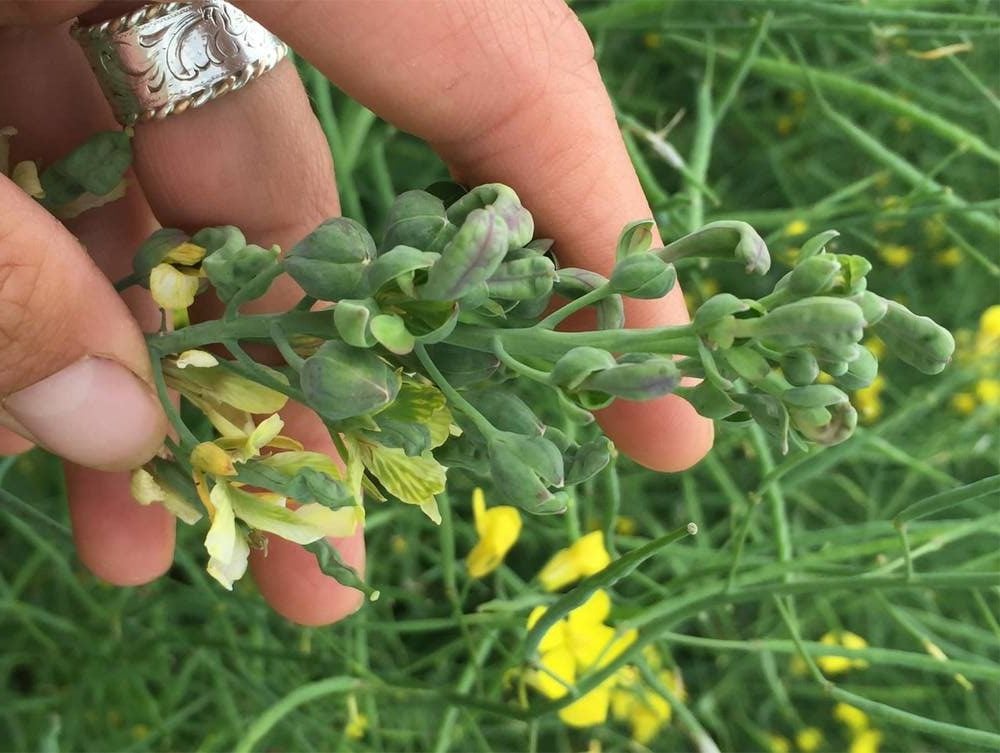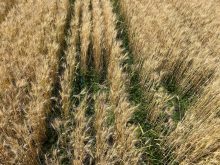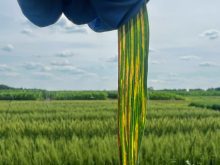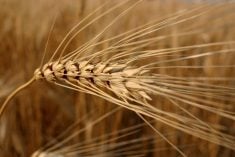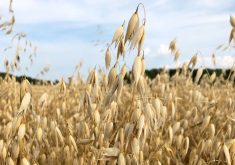While it’s not as prevalent as the flea beetle, in a bad year, the aster leafhopper can cause significant yield losses for canola growers. Yield is not affected by feeding damage but by spreading the bacterial disease aster yellows.
“Aster yellows is a disease that makes yellow things green,” said Tyler Wist, a research scientist in field crop entomology with Agriculture and Agri-Food Canada in Saskatoon, told an audience at Manitoba Ag Days 2025 in Brandon.
The disease is not specific to canola. It can infect many grasses and broadleaf plants. But in canola, it can have a devastating effect on pod development. Instead of the standard canola pod, the pods look like large green bladders.
Read Also

Claas brings 1000 Series SP forage harvesters to Canada
In mid-August, Claas unveiled its new line of Jaguar forage harvesters at an event in Visalia, California, deep in the heart of that state’s dairy region.
“If we cut them open, all the seeds have turned into tiny little leaf-like things,” says Wist, who adds it could mean complete yield loss in that plant if it was infected early enough.
Aster yellows was first identified in Chinese asters and derives its name from the damage it caused to these popular flowers. The disease is caused by phytoplasmas, a type of bacteria classified as mollicutes. These bacteria lack strong cell walls and rely on leafhoppers (a small migratory insect) and plant tissues to survive and spread.

Phytoplasmas infect plants by hitching a ride in the leafhopper’s “hemolymph” (insect blood) after the insect feeds on the phloem — the plant’s sugar-conducting tissue (plant blood). Once introduced into a new plant, the phytoplasmas travel to the growing regions, disrupting the phloem and stunting growth.
Because phytoplasmas can only live within plants or leafhoppers, making them particularly challenging to study since they cannot be cultured outside these hosts.
Most years, the incidence rate in canola is less than 0.1 per cent, but in 2012, there was a serious outbreak of aster yellows on the Canadian Prairies. That infestation saw incidences of between five and 64 per cent in fields, causing an estimated $400 million in canola losses.
“That’s the one everyone remembers,” Wist says.
It was so remarkable Wist was able to leverage the memory of that 2012 outbreak to land backing from WGRF and SaskCanola to fund a seven-year research project to try to better understand aster yellows. That study ran from 2017 to 2023.
During the course of the research project, Wist waited for another outbreak like 2012. But nothing approached those levels until 2023, the last year of the project, when there was a significant outbreak.
“The incidence wasn’t as high as it was in 2012, but 36 per cent is still pretty bad,” Wist says.
Alberta saw a 50 per cent yield loss in carrots, for instance. Pea crops were also affected, as were cut flowers.

“I went on a podcast with the cut flower growers of Alberta, and they had 28 different plants infected, and they lost at least half their yield,” Wist says. “The cut flower market got decimated in 2023.”
However, canola was largely spared because the flea beetle seed treatments found in virtually all canola varieties are also toxic to leafhoppers.
The differences between the 2012 and 2023 outbreaks largely come down to environmental conditions and insect behaviour.
In 2012, cool and wet weather created ideal conditions for plant infection. Under these conditions, plants are more vulnerable to the disease, and seed treatments targeting leafhoppers — the insects that spread aster yellows — are less effective, with kill rates dropping below 60 per cent. This allowed infected leafhoppers to survive long enough to spread the disease widely.
By contrast, 2023’s hot and dry conditions worked against the phytoplasma. Plants under dry soil conditions tend to be less susceptible to infection, and seed treatments were highly effective, killing nearly 100 per cent of feeding leafhoppers.
The drought connection
One of the most intriguing discoveries in the study of aster yellows is the apparent link between drought in the U.S. Great Plains region — the source region for migratory leafhoppers — and the severity of outbreaks in Canada.
In typical years, leafhoppers in these regions feed on winter wheat, a crop that does not effectively host the phytoplasma responsible for aster yellows. As a result, the disease has limited opportunity to build up in the insects before they begin their migration north.
However, during drought years, the dynamics shift dramatically. Winter wheat crops in the source areas tend to senesce earlier, leaving little for the leafhoppers to feed on. Forced to find alternative food sources, the insects move to weedy plants along field edges. These weeds, many of which are broad-leafed weeds, serve as reservoirs for aster yellows phytoplasma. Feeding on these plants allows the leafhoppers to pick up the pathogen and carry it northward.
“It is still a hypothesis, but the data fits,” Wist says. “With severe drought in the area, aster yellows increases in Western Canada; no drought, no outbreak.”


